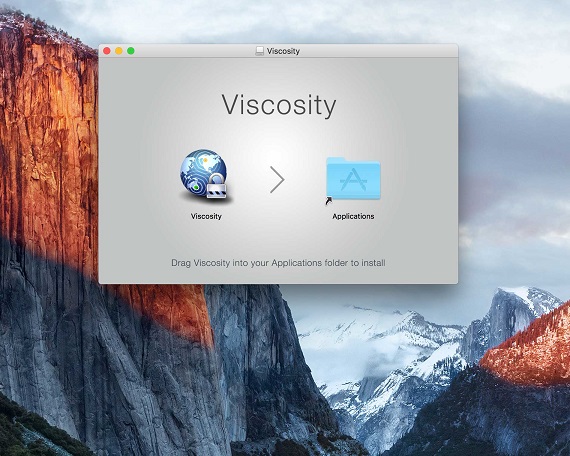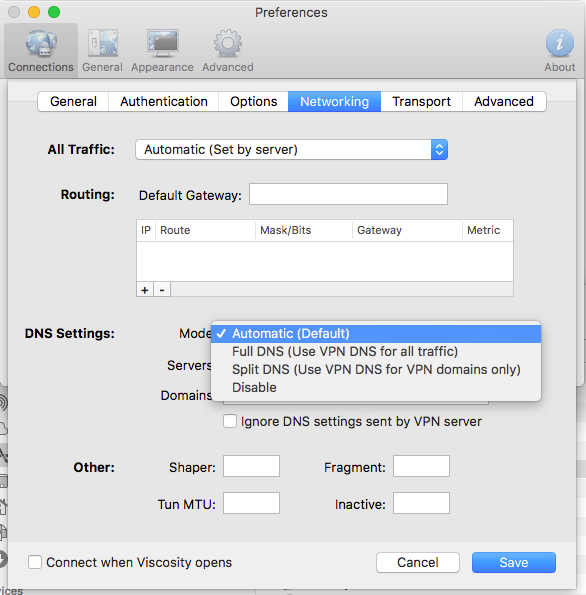

The advantage to Passepartout's option 3 is that after a VPN disconnect, the NextDNS app / profile will still be the backup. In this case (and in contrast to Viscosity's option 3) the VPN DNS settings from Passpartout will override the NextDNS app / profile. Option 4 is a combination of 1 and 3, i.e., using Passepartout with DoH / DoT and the NextDNS app / profile active.
#How to use viscosity vpn mac
Make sure to also enter your NextDNS IPv6 endpoints from your NextDNS setup page and to URL encode your device name in case that is needed (as described at the bottom of your NextDNS setup page). ( Mac & iOS) So, using only Passepartout with DoH / DoT is an easy option.
#How to use viscosity vpn manual
In the Passepartout DNS tab, just choose Manual and Cleartext and enter your IPv6 details. As with the second Viscosity option, it's possible to use Passepartout without the NextDNS app or profile active, by setting custom DNS.As with the first Viscosity option, it's possible to use Passepartout together with the NextDNS app or profile without conflict.The Passepartout app is another OpenVPN client that can be used with OpenVPN config files (or some select VPN providers without using config files). This is the best option overall when using Viscosity. If the Viscosity VPN connection drops, the NextDNS app / profile will be the backup. If the NextDNS / profile connection drops, you still have the custom DNS in Viscosity active, just like in option 2.

The NextDNS / profile connection overrides the custom DNS in Viscosity. This is the same setting as in option 2, but adds an active NextDNS app or profile connection. The third option is to use Viscosity's custom DNS settings with the NextDNS app or profile active.

Make sure to consider the correct other settings (framed in red in the attached image). DoH and DoT seemingly aren't supported for Viscosity's DNS settings. In the Viscosity networking tab, just enter your IPv6 NextDNS endpoint as shown on your NextDNS setup page. A disadvantage here is that you can't identify your device in the logs, because that's not possible with IPv6.

If the NextDNS app or profile become inactive, the pushed VPN DNS will be used in Viscosity. The active NextDNS app or profile will work without switching it off and on again. Here, compared to the provider app option mentioned above, VPN connection drops and reconnects won't result in issues. The first option is to just use Viscosity together with the NextDNS app or profile.The Viscosity app is an OpenVPN client that can be used with OpenVPN config files that most providers offer for downloading. This option can lead to some unexpected behaviors that will have to be tested for the specific VPN service/app in use. This can override the VPN DNS, but if the VPN connection drops and reconnects, the VPN DNS will be used from this point on. Sometimes however it works to just enable the VPN connection first and then to enable the NextDNS connection afterwards (via app or activating the profile). Most VPN apps/providers obviously push their own DNS servers to prevent leaks, this is expected. VPN Provider App & NextDNS App / Profile (Mac) Tested on macOS 11.6 and iOS 15.1 beta (should be just fine on iOS 14).
#How to use viscosity vpn for mac
Here are my experiences on this for Mac and iOS with several working options. There are many posts of people trying to use VPNs and NextDNS together, but this usually doesn't work well.


 0 kommentar(er)
0 kommentar(er)
